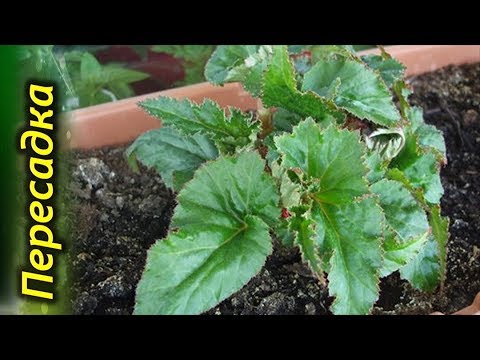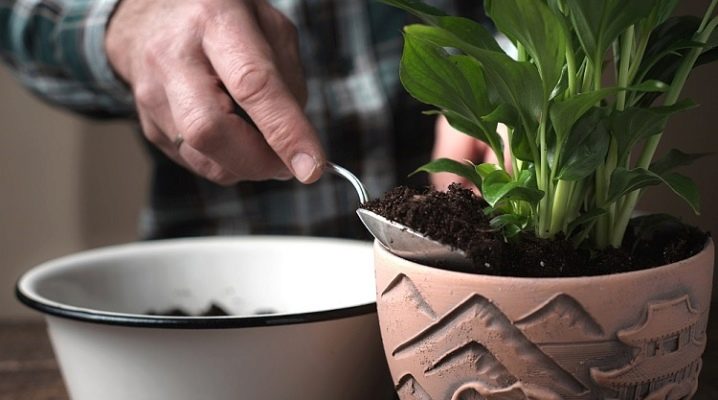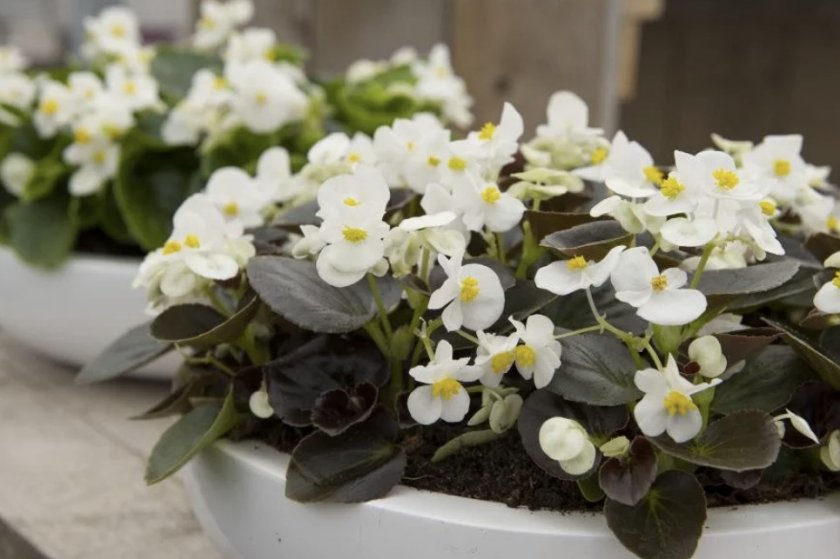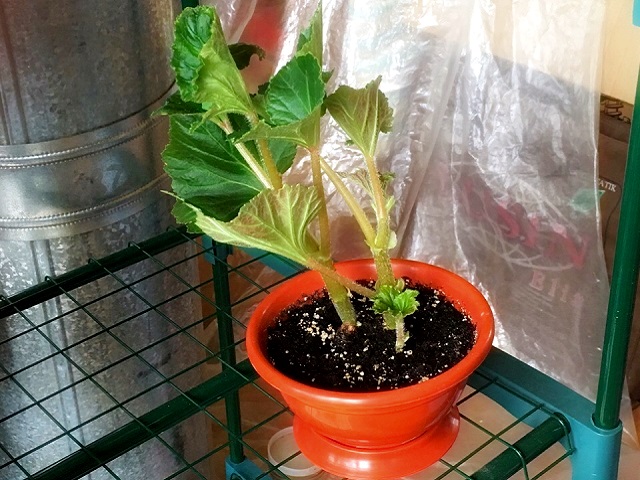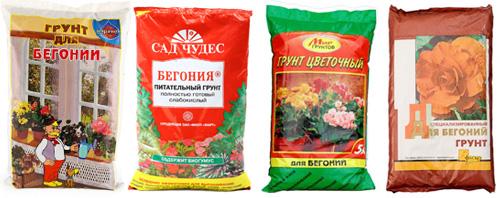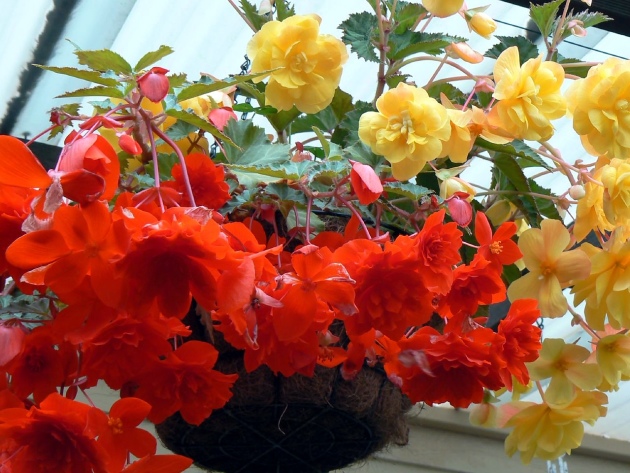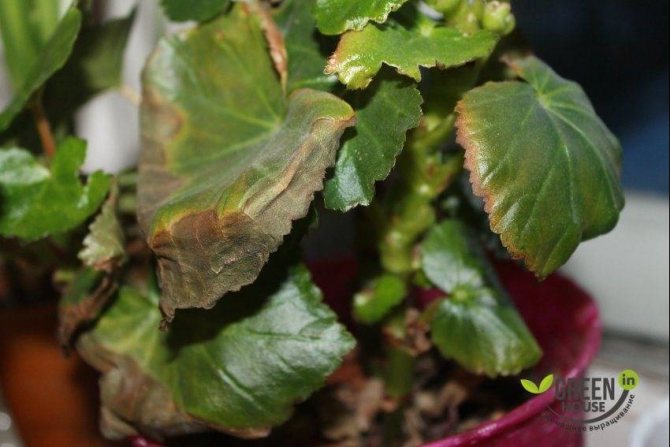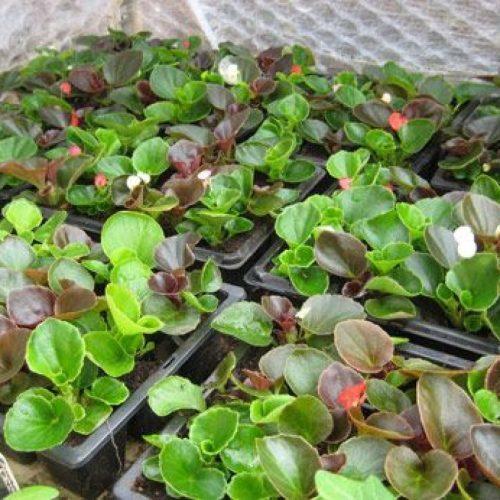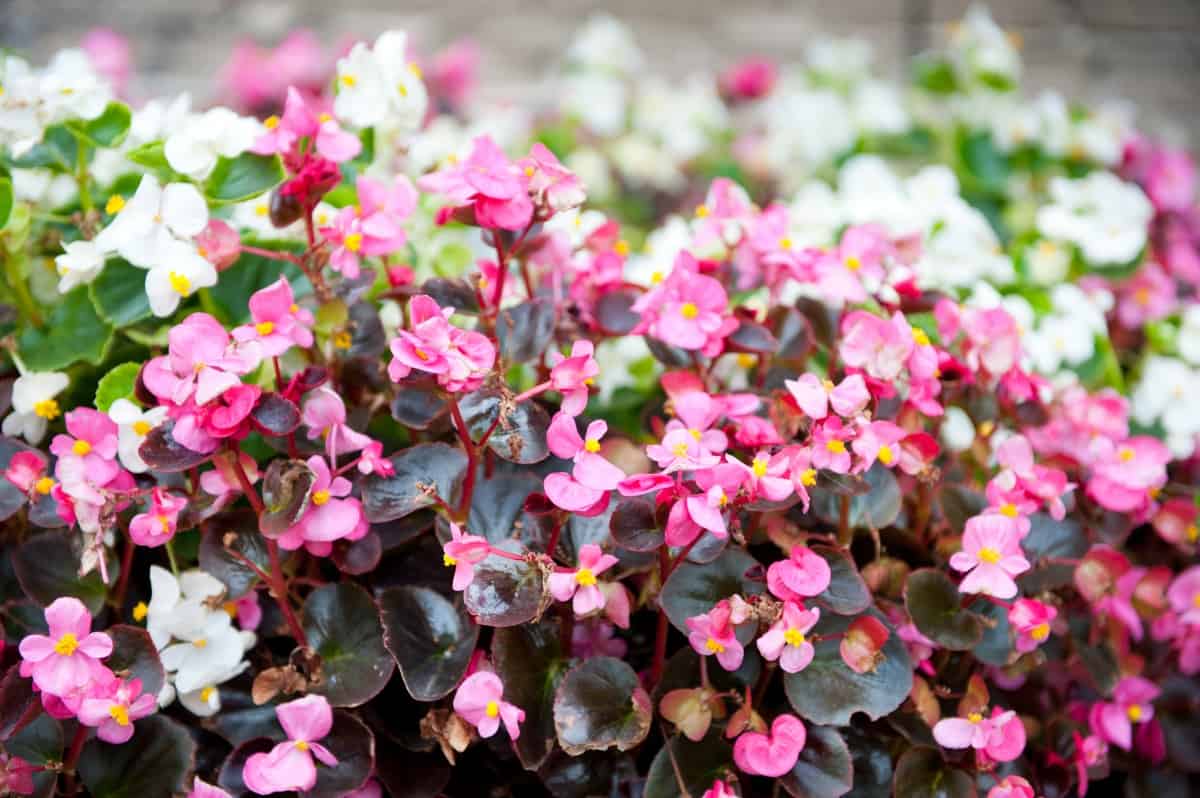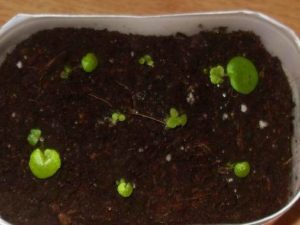5 tips from experts
- In hot summer, we advise you to put a pot of begonia on a tray with wet moss, peat or pebbles.
- It is better to transplant once, since juicy and fragile stems can be easily broken. The same tender and roots that will not withstand frequent transplants.
- When propagated by stem cuttings, it is better to initially immerse them in water before the roots appear. For leaf propagation, it is advisable to cover the pot with a plastic bag to create a steam effect.
- Falling buds immediately after they appear means a lack of minerals. The plant needs to be fertilized outside the intended plan.
- Not blooming begonia at all lacks light or the temperature regime is violated. All favorable conditions should be created for her. If this does not help, then your pet fell ill with an incurable disease (cucumber mosaic, nematodes), leading to death.
What role does the right soil play?
Despite the unpretentiousness of begonias, the composition of the soil and its structure play a decisive role in the well-being of the plant. From the soil, the root system delivers nutrients to the leaves and flowers. If it does not contain enough trace elements, the plant will lose its decorative properties - the flowers will fade, and the leaves will change color. In addition, begonia will become vulnerable to diseases such as gray mold and bacterial mottling. If emergency measures are not taken in this situation, the begonia will die.
The pH level plays an important role in the proper development of the plant. With excessive acidity of the soil, the substances necessary for proper development are less assimilated and the growth of roots slows down. Begonia is naturally characterized by a weak root system, so it is easier for it to survive an insufficient acidity level than an increased one. This is also explained by the fact that the roots of the plant are able to emit carbon dioxide, naturally raising the pH to the desired level.
The composition of the soil for different types of begonias may differ. So, for its blooming form, ingredients are needed that contribute to the formation of buds and prolonged flowering, and for a decorative leafy one, elements are needed that provoke the growth of green mass.
DIY begonia soil
To provide the plant with comfortable conditions, the easiest way is to purchase a ready-made store substrate. As a rule, it is called “For begonias”. Its advantages are that all the necessary ingredients are already mixed in the right proportions, the soil does not contain parasites and pests. If, for a number of reasons, it is impossible to purchase a special substrate, you can prepare it yourself.
Preparing the soil components for begonias
Florists-enthusiasts, choosing which land to plant begonias, will give preference to compositions of their own preparation. This gives them confidence in the quality of the components and saves money.
What water to water indoor flowers
Risks:
- forest land contains worms and infections - sources of flower diseases;
- in the accumulated many weeds and their seeds.
Prepare components for planting begonias as follows:
- Leafy ground is found in the forest or under a tree. It should not be oak or willow, because their foliage contains tannins, and they destroy begonias. Choose a sunny area under the tree, remove the top layer with last year's rotted leaves. The exposed layer is collected in containers.
- Sod land is taken in meadows, which are far from highways and industrial facilities. This is a "mole" land. Ideally harvested directly from mole piles. Or they choose a bright place, remove the top layer of earth by 10-15 cm, gain soil.
- Compost or humus is picked up. Or replace them with garden soil. Do not lose sight of the fact that humus not only enriches the soil with nutrients, but also increases the acidity of the soil.
- The collected components are mixed.
Important! The mixed soil is sieved to get rid of roots, pebbles, beetles, worms
The main mistakes when preparing the land
Begonias do not forgive the miscalculations that flower growers make when preparing the soil for planting:
- the land is harvested in the wrong place (in an industrial zone, under an oak tree);
- do not respect the proportion;
- do not disinfect the soil.

Begonia of different varieties
We buy ready-made soil: what to look for
Manufacturers offer a wide range of primers. Usually begonia soil is enriched with high quality natural ingredients:
- biohumus;
- mineral and organic fertilizers;
- micro and macro elements;
- dolomite flour;
- vermiculite.
When buying, they carefully study the composition indicated on the package and select the right one.
Store options
Buying soil makes the task easier, since you do not have to spend a lot of effort in obtaining components for self-preparation.
Basically, the store substrate contains low peat mixed with mineral additives. Such soil is suitable for growing many plants, but using it implies an increase in the number of irrigations, since moisture evaporates from clean peat much faster.
All nutrients are easily and quickly washed out of the substrate, so begonia growing in purchased soil needs frequent feeding.
Finding a suitable substrate in the store is easy: the packaging will indicate in large letters that it is suitable for begonias.
- Substrates from the Garden of Miracles firm are popular. The soil consists of high quality peat mixed with river sand and agroperlite. Biohumus and mineral fertilizers are used as nutritional supplements. For a package of 2.5 liters, you will have to pay 30 rubles.
- The firm "World of Soils" produces soils composed of high and low peat, chalk, dolomite flour, sand and vermiculite.
- The company "Respect" sells substrates for begonias with a complex fertilizer called "Sapropel", which consists of peat, sawdust, river sand and additives of organic origin.
- The soil produced by Vermion is made from peat, gravel and vermicompost. One package containing 2 liters of earth costs about 27 rubles.
Suitable soil composition for begonia
Soil for indoor begonia must contain the following elements:
With a lack of nutrition in the plant, the castings brighten and turn yellow, it stops blooming, the buds fall off, yellow dots appear on mature leaves. To provide begonias with nutrients, you need to purchase a special fertilizer, which can be easily found in a specialized store.
Flowering forms especially need feeding, since flowering takes a lot of energy from the plant.
Excess fertilization can also adversely affect the condition of the flower. With an excessive amount of trace elements in the soil, the leaves acquire a dark green color, curl, the stems thicken and rot. If you have reason to think that the plant has received an excessive amount of fertilizer, there are two ways to solve this problem. In case of a slight overdose, it is necessary to remove the pot from the pallet and water it abundantly over the sink - so that water flows through the drainage holes. Otherwise, a transplant with a complete soil replacement should be carried out.
How to plant in the ground?
For this method, sheet plates are best suited, the seamy side of which is covered with fluff. The wider it is, the more seedlings you can get. It is necessary to choose one healthy leaf without stains and damage. It is better to carefully cut it off or cut with a knife: this way the parent plant is less injured.For landing, you need to step by step perform certain actions.
- Use a knife or razor blade to divide the sheet into several pieces. Tearing with your hands is undesirable. The division should take place in such a way that the large longitudinal veins are inside the segment.
- Each part must be placed in the ground separately. It is believed that they can simply be spread out on top of moistened soil.
- It will be much safer to plant them so that the cut of the vein is at the bottom, and the whole edge of the leaf is on top. The lower part of the leaf can be treated with a root growth stimulant.
- Then the containers need to be turned into a kind of greenhouse: cover with plastic on top and create partial shade. The film needs holes for ventilation. As it dries, the soil should be moistened, but it is better to use not watering, but spraying around each particle.
- The first shoots appear in 2 to 3 weeks. After that, the coating can be removed for a short time, increasing these gaps. Do not remove part of the old leaf at once: it can still give off some nutrients.


If this option seems too troublesome for you, it can be slightly simplified by using a common container.
If the leaf has a small stem (stalk), you can plant it entirely. The leg must be cut obliquely and deepened a little, and slightly press the soil around. This method is used if a large number of shoots are not needed.



If the leaf remains in the same state for a long time, it may not have enough moisture. Excessive moisture usually destroys the plant: it changes color, rots, mold may appear. Growing plants need good lighting, so it is better to postpone reproduction until the spring. A couple of months after the shoots appear, larger pots can be prepared.


Breeding methods for indoor begonias at home: cuttings, tubers and leaves (with photo and video)
There are several ways of propagation of begonias: leaf and stem cuttings, seeds, division of rhizomes.


The propagation of a begonia flower can be done by pieces of branches with two to three leaves. These pieces of branches are called cuttings. The cut of the cutting is made with a safety razor slightly beveled under the leaf nodule. The leaves are cut in half. A hole is made in the wet sand with a stick, not straight, but sideways, almost parallel to the surface. Half a cutting is inserted into this hole and pressed with sand. The roots are formed only when air is available, that is, with good breathing, which is why they plant the stalk so that its cut, where the roots are formed, would not sit deep.


When begonias are propagated by cuttings, sand is also used at home so that the air passes more easily and the water does not stagnate. The cuttings are covered with a glass jar and placed in a warm and lighter, but not very sunny place. You already understand that begonias, as inhabitants of tropical forests, require watering, spraying, well-fertilized, leafy, but light (with an admixture of sand) soil and cannot stand very bright sunlight.
This video shows propagation of begonias by cuttings:
Tuberous begonias blooming in summer have large double flowers in all shades of red, pink, orange, yellow and white. They are propagated by tubers or seeds, planted in trays filled with moist peat, and lightly sprinkled on top. After two to three weeks at a temperature of 13–16 ° C, the leaves reach 5 cm in length. At this stage, the tubers are transplanted one at a time into pots 10–15 cm in diameter so that the top of the tuber is at the level of the potting mix. The plant is watered moderately, avoiding waterlogging of the soil mixture, which usually causes root rot.
When the plants take root, watering is gradually increased. Since plants love humid environments, the racks are moistened daily. In sunny weather, to prevent plant burns, especially during the flowering period, begonias require shading.For this, plants are placed either in the shade of other crops, or screens are installed. The temperature is maintained within 13-15 ° C, the soil mixture is moistened. Fluctuations in temperature and humidity are not allowed - they lead to the fall of flower buds. With the appearance of buds, they begin to feed with liquid fertilizers. After the flowers bloom, they are carefully propped up with slingshots from the branches. At the end of flowering, watering is gradually reduced.


It is possible to propagate begonias at home by seeds. Their tuberous begonias are sown at + 18 ° C. Young plants are planted in pots as they develop, gradually increase the watering rate and carefully monitor that there are no fluctuations in humidity in the greenhouse. Plants need high humidity. In addition, the temperature is constantly maintained at + 13-15 ° C. Top dressing with liquid fertilizers is carried out after the formation of buds. To prevent plant burns in hot weather, the greenhouse is shaded.
Winter flowering hybrids from the Lorraine and Elatior groups can be propagated by stem and apical cuttings and partially by leaves. Cuttings are cut in February-March. Each must have at least two leaves and two axillary buds. Cuttings are rooted in a mixture of peat and sand at a temperature of 22-24 ° C. As the plant develops, two transshipments are made with simultaneous pinching of the shoots. It can also be propagated by well-developed leaves, regardless of their size. Root them in the same mixture as cuttings from the shoots.
A begonia leaf placed on glass can be cut into triangles with a vein bifurcating in two in the middle.
Such triangles are planted with a narrowed end in wet sand no deeper than one centimeter, covered with a glass jar or glass and placed in a warm place. This triangle gives roots, and leaves of a small plant grow on the side.
Look at the photo of begonia leaf propagation in order to better understand how this agricultural technique is performed:


How to propagate at home?
Cuttings
Propagation by cuttings is one of the most popular propagation methods, as it preserves all the characteristics of the mother plant and gives quick results. Cuttings of Elatior begonias are carried out in the spring-summer period, when the plant is in the phase of active vegetation, and the weather conditions contribute to the rapid and effective rooting of shoots.
Some growers believe that cuttings rooted in summer will give too squat undersized bushes that bloom too quickly, preventing the plant from growing fully.
Preparing cuttings
- It is necessary to choose healthy, without visible damage, apical cuttings 8 - 10 cm long, each must have a pair of leaves and 2 - 3 axillary buds.
- They should be cut from the mother plant with a sharp disinfected knife or pruner at an angle of 45 degrees.
- It is recommended to dry the petiole slightly in the air, and dip its tip into a root formation stimulator before rooting.
Another option is also allowed: cut cuttings are left overnight in a Heteroauxin solution.
How to root?
The best option for rooting Elatior begonia is to place the cuttings not in soil or water, but immediately in vermiculite, perlite or sphagnum in pure form. All of these substances have some antibacterial properties.
It is better to use a small transparent container as a pot for rooting the cuttings: it will be easier to observe the development of roots and the condition of the soil. You can use ordinary plastic cups for these purposes, but do not forget to make holes in them for the drain of excess water, and the bottom layer should be drainage and consist of expanded clay or brick chips, pieces of foam plastic.
- The cut and dried petiole is dipped with its tip into water, and then into a root formation stimulator, for example, "Kornevin".
- Further, the shoot is deepened at an angle into moist vermiculite by 2 - 3 cm.Rooting will be more likely to succeed if the pot is covered with a jar or plastic bag on top, while not forgetting to open the bag or jar daily to ventilate the seedling and systematically moisten the soil.
- With the appearance of the first roots (after 2 - 2.5 weeks), the "greenhouse" can be removed.
Planting in soil
As soon as the roots get stronger, begonias can be planted in individual pots with a diameter of 7 - 9 cm, which are filled with a substrate consisting of purchased soil, perlite and vermiculite in equal proportions.
The best planting method for young seedlings rooting in the ground is the transshipment method:
- The plant is taken out of the container and, without shaking off the soil coma, is placed in a new pot.
- The top layer of soil near the stem is crushed by hands, the plant is watered and put in its place.
- When the plant reaches a height of 12-15 cm, it is necessary to pinch the top leaf in order to form a decorative crown of the plant.
Attention! In Elatior begonia, the development of peduncles can be stimulated: the plant receives light for 9 hours, the rest of the time the sprouts are covered with a black bag. This regime must be observed for 10-14 days.
As a result of such manipulations, flowering can be expected in 2 - 3 months.
We invite you to see video about the propagation of Elatior begonia by cuttings and leaves:
Seeds
Since Elatior begonia is a hybrid, it is extremely difficult to propagate it at home. It is not possible to collect seed on your own. But if you managed to buy seeds in a store, then you can sow them in February - March, so that by the beginning of summer the plant will release its first buds.
A suitable container is a container with holes in the bottom and a drainage layer. It is better to take the soil purchased, it should be watered abundantly a day before sowing.
- The seeds are evenly distributed over the surface, covered with glass or foil on top, not forgetting about the daily ventilation of the crops. The required temperature in the room with containers is + 22C - + 25C. The place in which the box with seedlings is located should be well lit, but not in direct sunlight.
- After the seedlings appear and get stronger, the cover can be removed.
- When the seedlings form 2 - 3 leaves, it is necessary to make a pick, planting them 2 - 3 cm apart.
- After a month or two, a second pick is carried out: the distance between the seedlings should be 5 - 6 cm.
- And only in May, with the establishment of warm weather, young shoots are planted in individual pots.
Reference! Planting seedlings of a plant from a common container into individual containers is traditionally called diving. In this case, the final part of the taproot is necessarily removed during this seating. This is done in order to stimulate the branching of the root system.
Systematic care
After planting or transplanting, the pots are placed on a pallet. Plantations do not like permutation from place to place. They need to allocate a warm, bright room without winds, drafts. They can grow in partial shade. Flowers do not like direct sunlight. In this case, there will be burns on the stems, the leaves will begin to turn black and crumble. Watering should be irregular. It is enough to water the bushes once a week. The room temperature should not exceed 25 ° С, and fall below 15 ° С. Green pets need humid air year-round. Therefore, the young itself or the air next to it is sprayed with water from a spray bottle. After flowering, wilted flowers must be removed. Green pets need good nutrition. Mineral fertilizers are applied to the soil every two weeks. You can use chicken manure, manure, orange peels, tea or coffee leaves.
Planting and transplanting of this representative of the flora is carried out in the spring after a dormant period. In order to avoid decay of the root system in containers, it is necessary to use good drainage.Landscaping does not like permutation from place to place. For good growth, you need to choose lighted warm ropes without drafts and direct sunlight.
Next, you can see a photo of planting, transplanting and caring for begonia at home:

